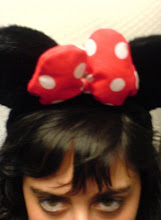Analytical film review I wrote for a film magazine, during Cannes 2008.
***
The organism that is Tokyo lives; it’s vibrant, energetic and unpredictable.
And forms the décor for an amazing cooperation between directors Joon-ho Bong, Leos Carax and Michel Gondry and producer Anne Sawada for the triptique Tôkyô! (Shaking Tokyo, Merde and Interior Design). As well as the international co-production Tokyo Sonata directed by Kiyoshi Kurosawa. Who will all premiere during this edition of the Cannes film festival in the Un Certain Regard program. Four completely different stories, but all situated in a city that is definitely a great subject and background for inspirational cinema.
Ever since Venetian explorer Marco Polo mentioned a country the Mandarin Chinese called Cipangu in his 13th century recount of his travels to the far-east Il Milione, Japan has intrigued westerners immensely. Nippon, The Land of the Rising Sun, draws us in with its mystique and doesn’t let go. So it is no wonder that Japan has been featured in western films from as early as 1901, when a short American documentary called Asakusa Temple was directed by Robert K. Bonine, depicting, among other things, some early tourists admiring the impressive temple in Tokyo. This silent film already showcases what will become a niche within western film; films about Japan, and especially about its capital Tokyo.
Perhaps it’s the way the Japanese culture seems to cherish purity that we rugged westerners crave for its depictions. In Wim Wenders’ Tokyo Ga, the director goes in search of just that; to find pure images. Images he so admired in the work of Japanese director Yasujiro Ozu. He finds a much-changed society, where the mystique has been replaced by Pachinko arcades and wax effigies of restaurant food. However, in a way, these images are as pure and no nonsense as the ones he was searching for. The endless shots of trains, metal Pachinko balls and people among the cherry blossoms in a graveyard have an almost meditative quality to them.
Lost in Translation by Sofia Coppola has that same reflective atmosphere. It provides a view of Tokyo as seen by foreign visitors. Literally lost among the confusion of the vast city’s dynamics, the main characters search for some kind of piece of mind, in each other’s company. And piece of mind, it turns out, is hard to find.
But not only foreigners search for ways to connect within the city. The Japanese characters of Hinano and K in Jean-Pierre Limosin’s Tokyo Eyes also look for some sort of a connection, albeit of a different kind. K tries to change wrongdoers by shooting at them with a rigged gun that (nearly) always misses. And 17-year-old Hinano searches for affection and some sense of adventure. The film has many references to other films, which gives it extra dynamism and does make one wonder how the film had turned out, had the director followed his initial idea to shoot it in Paris. Simply because the Tokyo setting seems to fit the story like a glove. Or better said; like a well-oiled train. For trains seem to be the common denominator within films shot by foreigners in Tokyo, even those who originate from the east. The simple voyage from “a” to “b” becomes a journey inward, a almost philosophical search for meaning. In Hou Hsiao-Hsien’s Café Lumiere, the network of trains resembles arteries that feed the city, and the main characters’ activities. Always pulsating with the sound of metal wheels on tracks, the movement of the wagons and the soundtrack of Taiwanese composer Jiang Wen-Ye. The city as a living, breathing organism. But still as pure as the films of Ozu it was inspired by.
Just like jazz musicians hear music in the heartbeats of cities like New York and Paris, filmmakers will keep finding rhythms in Tokyo’s pulse that drives their films, feeds narrations and gives them a spirit that can’t be found anywhere else.

No comments:
Post a Comment